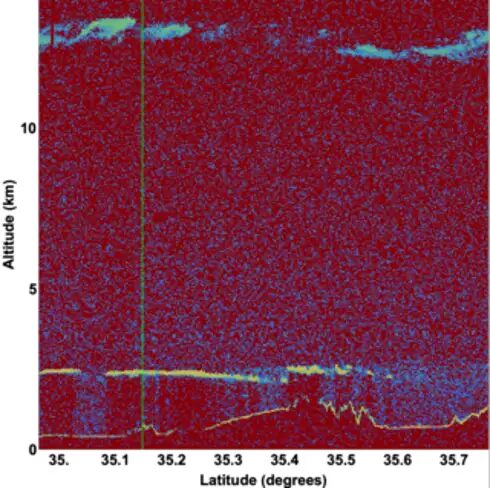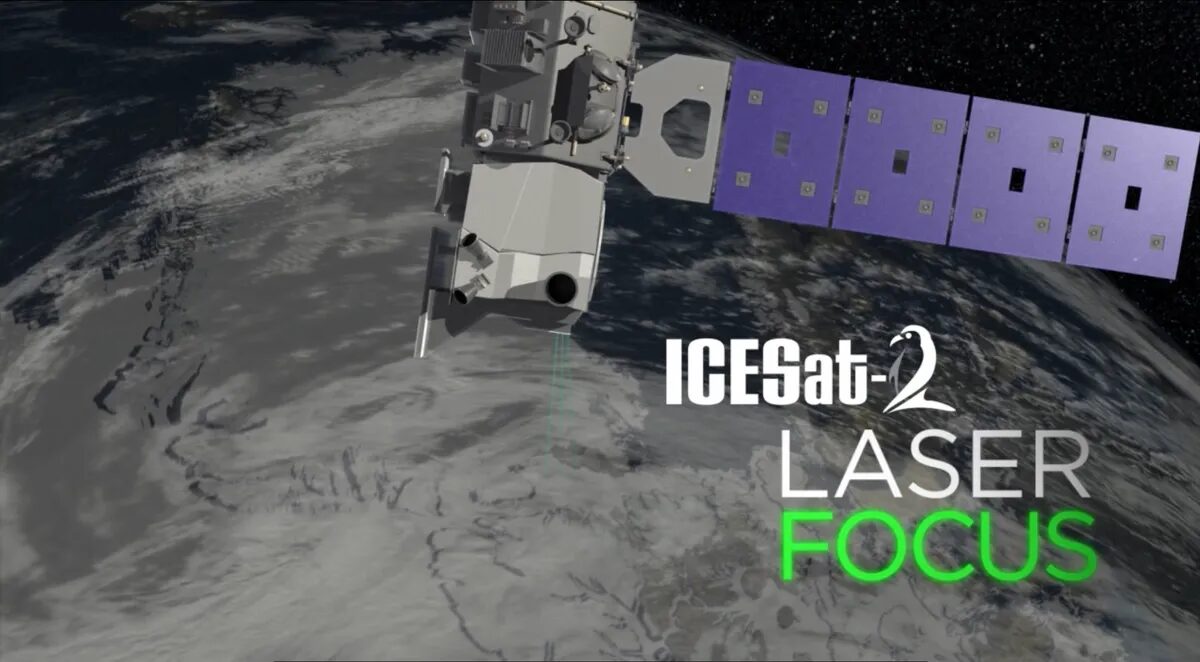After studying the footage and comparing it to orbital data, Fujii found the responsible party: NASA's Ice, Cloud and Land Elevation Satellite 2, or ICESat-2, which had flown over Japan that night.
According to Tony Martino, an instrument scientist for the satellite, it's the first time the team has seen footage of the instrument's lasers pulsing through the sky.
"ICESat-2 appeared to be almost directly overhead of [Fujii], with the beam hitting the low clouds at an angle," Martino said in a NASA release. "To see the laser, you have to be in the exact right place, at the right time, and you have to have the right conditions."
ICESat-2 launched in 2018 and is used to measure the height of Earth's surfaces. It is basically a space-based lidar scanner, similar to those used by archaeologists to discover ancient sites lost to natural features like forest growth.
The video footage was captured on September 16, 2022. It shows three streaks of light zip across the sky against a backdrop of scattered clouds. Upon further scrutiny, Fujii realized the green streaks pulsed in time with a light that briefly appeared between the clouds (just above the center of the video frame, if you want to spot it yourself).

To show the other side of the encounter, NASA released ICESat-2's perspective of Japan. A data plot shows the satellite's measurement of the cloud layers over Japan as well as the country's topography.
ICESat-2 fires 10,000 times per second, according to NASA. The satellite's been imaged from the ground before, but not its laser pulses, which require unique atmospheric conditions to be spotted.
The clouds over Hiratsuka City Museum that night scattered the laser light enough to make it visible to Fujii's cameras, but there were not so many clouds to block out the light.
So the next time you see a bright light in the sky, it may not be a meteorite or aliens. It may just be human instruments, keeping track of goings-on on the ground.




Reader Comments
Aliens are already here, I've been married to a couple of them through my lifetime.
Close encounters of the 3rd kind, should report that to mufon.
Also isn't it dangerous to shine lasers here on Earth?